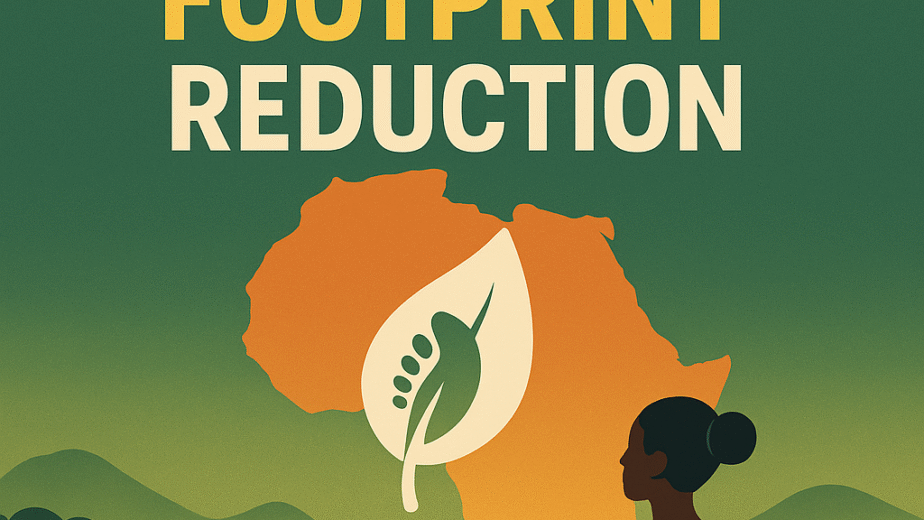Beyond Open Banking: Why Open Finance Is the New Frontier in 2025

Beyond Open Banking: Why Open Finance Is the New Frontier in 2025
It started with a failed mortgage application in Nairobi.
A young entrepreneur, thriving on mobile payments and digital wallets, was denied a loan—not because of poor finances, but because her financial life lived outside the legacy banking system. Her savings were in a mobile wallet, her income flowed through freelance platforms, and her investment portfolio sat on a crypto exchange. The bank saw none of it. She was invisible to traditional credit models, a ghost in the machine.
This story isn’t fiction—it’s the lived reality of millions across Africa, Europe, and beyond. And it’s precisely why Open Banking Expansion to Open Finance matters more than ever in 2025. The future of finance isn’t just open—it’s integrated, intelligent, and inclusive.
From Open Banking to Open Finance: A Paradigm Shift
Let’s start by unpacking the buzz. What is Open Banking Expansion to Open Finance? In essence, Open Banking gave third-party providers access to bank-held financial data via APIs (with customer consent). It was revolutionary—but limited. Open Finance broadens this scope dramatically to include:
- Insurance policies
- Investment accounts
- Digital wallets
- Buy Now Pay Later (BNPL) services
- Pension funds and crypto holdings
This expansion allows for a truly holistic financial ecosystem that brings all consumer financial data into one accessible, consent-driven layer. So, how does Open Banking Expansion to Open Finance work? Through interoperable APIs and consent management frameworks, regulated third parties can aggregate and act on diverse financial data—enhancing decision-making, personalization, and inclusion.
Market Dynamics in 2025
According to recent market analysis, Open Finance adoption has accelerated globally:
- 40+ countries have introduced or enhanced API-based data-sharing frameworks beyond banking.
- Europe’s PSD3 and Financial Data Access (FIDA) Regulation is set to formalize Open Finance mandates by mid-2026.
- In Africa, Nigeria, Kenya, and South Africa are leading with regional Open Finance sandboxes fostering fintech innovation.
- Global market size for Open Finance solutions is forecasted to reach $115 billion by 2030, up from $21 billion in 2022.
If Open Banking was the door, Open Finance is the gateway to a fully interoperable financial future.
The Compliance Maze: Requirements and Regulatory Framework
Let’s not sugarcoat it—Open Banking Expansion to Open Finance compliance isn’t a walk in the park. Institutions now deal with a broader pool of data types, data controllers, and user consent complexities.
- Consent Management: GDPR-style explicit, granular, and revocable consent is now mandatory across all shared financial data—not just bank accounts.
- API Standardization: Regulators like the EU and UK are pushing for uniform open APIs across sectors to enable true interoperability.
- Third-Party Governance: Financial institutions must vet and monitor a growing ecosystem of service providers accessing their customers’ data.
The Open Banking Expansion to Open Finance regulatory framework is being hammered into shape. PSD3 will offer more clarity, while South Africa’s Intergovernmental Fintech Working Group is already piloting voluntary Open Finance principles through its API ecosystem.
For compliance professionals, this means more DPO involvement, stronger data lineage controls, and rethinking risk frameworks. It’s not just about sharing data—it’s about shared responsibility.
Open Finance Use Cases: Beyond the Buzzwords
So, what does this look like in practice? Here are real-world Open Banking Expansion to Open Finance use cases lighting up the financial corridors we serve between Africa and Europe:
1. Cross-Border Credit Scoring
In partnership with EU-based lenders, PAA Capital is piloting a service that lets diaspora clients in Botswana and Ghana share proof of income from remittances, e-wallets, and investment platforms to qualify for loans abroad. Existing banks couldn’t see them; Open Finance made them visible and credible.
2. SME Liquidity Optimization
European SMEs with suppliers in Africa are streamlining trade finance. By sharing invoice financing histories, payment cycles, and supplier reliability data from multiple platforms, lenders can assess risk dynamically—cutting approval times by 60%.
3. Wealth Management Precision
High-Net-Worth Individuals (HNWIs) can now aggregate bank balances, brokerage accounts, crypto positions, and insurance coverage into a single dashboard. Robo-advisors use this data to recommend tax-optimized portfolio rebalancing in real-time.
In short, Open Finance isn’t theoretical—it’s changing how we underwrite, invest, and transact every day.
Challenges and Adoption Barriers
But let’s not pretend it’s all sunshine and APIs. Open Banking Expansion to Open Finance challenges remain significant:
- Consumer Trust: Many customers remain wary of sharing data, especially with fintechs they don’t fully understand.
- Data Silos: Insurers, pension providers, and crypto platforms are slower to adopt open API standards, prolonging fragmentation.
- Security Considerations: Broader data sets mean more vectors for fraud, from account takeover to phishing-driven consent abuse.
- Cost Analysis: Building and maintaining secure, standardized APIs across financial categories is capital intensive.
Open Banking Expansion to Open Finance adoption barriers tend to cluster around legacy infrastructure, regulatory ambiguity, and value proposition clarity. The key? Cross-sector partnerships and government-backed incentives to play ball.
Implementation Guide: Best Practices for Institutions
Whether you’re a bank, fintech, or e-money provider, the road to Open Finance maturity starts with six core principles:
1. Think Consent-First
Make consent intuitive, transparent, and reversible. Use layered disclosures and real-time dashboards for permissions tracking.
2. API Like a Pro
Invest in RESTful APIs aligned with regional standards (e.g., Berlin Group, Open Banking UK). Avoid proprietary dead-ends.
3. Partner Intelligently
Vet third parties intensely—security audits, regulatory status, and incident recovery are table stakes. Treat data access as a privilege, not a right.
4. Build for Compliance
Embed data protection officers, conduct DPIAs (data protection impact assessments), and maintain auditable consent logs.
5. Embrace Interoperability
Don’t build in silos—design with multi-jurisdictional portability in mind. Africa-EU corridors, in particular, require flexible architectures.
6. Educate the Customer
Without clarity, customers won’t opt in. Invest in financial literacy campaigns explaining what they gain by sharing data.
Success Stories: Leading the Charge
In 2025, some players are already leading the way:
- PAA Capital has created a regulated digital escrow product that integrates Open Finance APIs to assess buyer solvency and seller risk exposure in real time.
- Visa’s Open Finance Lab in Nairobi is onboarding 500,000 customers to multi-platform credit scoring initiatives by Q2 2026.
- EU-based SolarInvest allows investors to fund African solar projects using Open Finance-linked ESG scoring models pulling from insurer and utility data, not just credit reports.
These aren’t just pilot projects—they’re revenue-generating, risk-managed, scalable models. Open Finance is driving next-generation use cases at the intersection of inclusion and intelligence.
Future Outlook: Where We Go From Here
Open Banking Expansion to Open Finance trends 2025 point to an inevitable trajectory: more data, more access, more accountability. As regulators catch up and markets mature, we expect:
- Universal data portability laws across the EU and Africa by 2027
- M2M (machine-to-machine) financial API automation for real-time risk underwriting and smart contract execution
- Embedded compliance as APIs integrate KYC/AML checks automatically into Open Finance workflows
The bottom line? Open Finance is what Open Banking always aspired to be—holistic, human-centric, and future-proof.
Final Takeaways: Open Finance as Strategic Imperative
For institutional clients, HNWIs, and compliance leaders, the message is clear: Open Finance is not a compliance headache—it’s a strategic weapon. Yes, the regulatory bar is higher. But so is the business ceiling.
Done right, it’s about more than data—it’s about delivering intelligence, trust, and access at scale.
At PAA Capital, we’ve bet the farm (and the digital escrow) on this future. If you’re still asking whether Open Finance is worth the effort, you’re asking the wrong question. The real question is: can you afford to be left behind?
Have questions about implementing Open Finance across African-European corridors? Reach out. Our compliance team has walked this road—and we’re ready to guide you through it.


